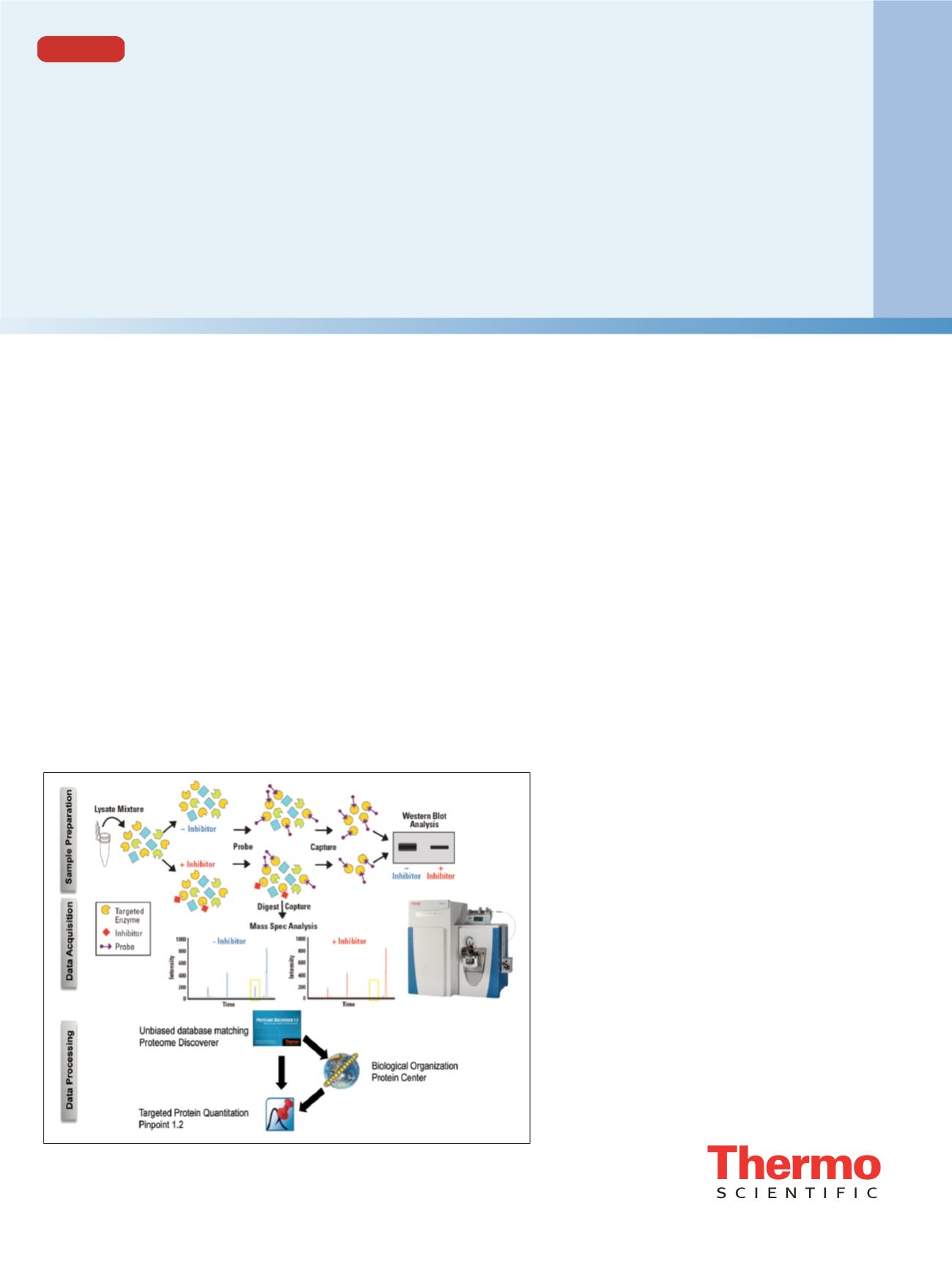

Targeted Kinase Inhibitor Profiling
Using a Hybrid Quadrupole-Orbitrap
Mass Spectrometer
Scott Peterman
1
, Ryan D. Bomgarden
2
, Rosa Viner
3
1
Thermo Fisher Scientific, Cambridge, MA;
2
Thermo Fisher Scientific, Rockford, IL;
3
Thermo Fisher Scientific,
San Jose, CA
Application Note
574
Key Words
Q Exactive, targeted peptide quantification, msxSIM, kinome profiling by
MS, desthiobiotin nucleotide probes
Goal
To identify and quantify kinase inhibition by staurosporine using kinase
active sites probes in combination with targeted, multiplexed SIM (msxSIM).
Introduction
Protein kinases are key enzymes involved in a wide array
of complex cellular functions and pathways. Misregulation
or mutation of protein kinases underlies numerous disease
states, including tumorigenesis, making them ideal candidates
for drug development. However, identifying specific
kinase inhibitors is challenging due to the high degree of
homology among subfamily members of the 500+ human
kinases. In addition, overlapping kinase substrate
specificity and crosstalk between cellular signaling
pathways can confound attempts to identify kinase
inhibitor targets
in vivo
.
An emerging technology for identifying kinase inhibitor
targets is based on chemical proteomic profiling of kinase
inhibitor specificity and binding affinity. This technology
combines mass spectrometry (MS)-based identification
and quantitation with small molecule probe binding and
enrichment to determine kinase active site occupancy
during inhibition. One of these methods uses novel
biotinylated ATP and/or ADP probes that irreversibly
react with conserved lysine residues of kinase ATP binding
sites.
1,2
Selective enrichment of active-site peptides from
labeled kinase digests dramatically reduces background
matrix and increases signal for MS analysis of low-
abundance kinase peptides. Using this method, more than
400 different protein and lipid kinases from various
mammalian tissues and cell lines have been identified and
functionally assayed using targeted acquisition on an ion
trap mass spectrometer.
1
The assays are available
commercially from ActivX Biosciences as their KiNativ
™
kinase profiling services.
Our approach incorporates desthiobiotin-ATP and -ADP
probes with a hybrid quadrupole-Orbitrap
™
mass
spectrometer into an integrated workflow for global
kinase identification and inhibition analysis (Figure 1).
This workflow leverages the unique capabilities of the
mass spectrometer for acquisition of MS and MS/MS
spectra in unbiased or targeted modes with Orbitrap ion
detection for high resolution and mass accuracy. A
multiplexed data acquisition method was also employed
to maximize instrument duty cycle and quantification of
low-abundance kinase peptides through selected ion
monitoring (SIM) on a nano-LC timescale. Overall, this
approach resulted in significant improvements to kinase
active-site peptide detection and relative quantitation for
kinase inhibitor profiling.
Figure 1. Integrated workflow of sample preparation/enrichment, data acquisition and
data processing for global kinase identification and drug inhibition profiling



















